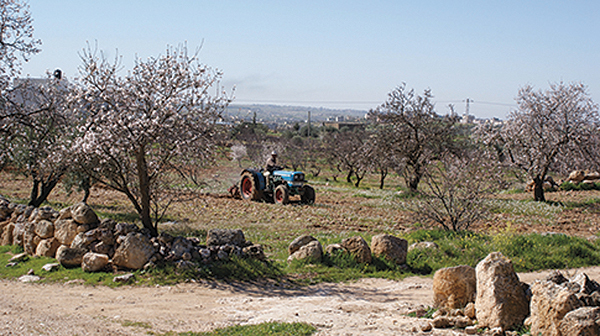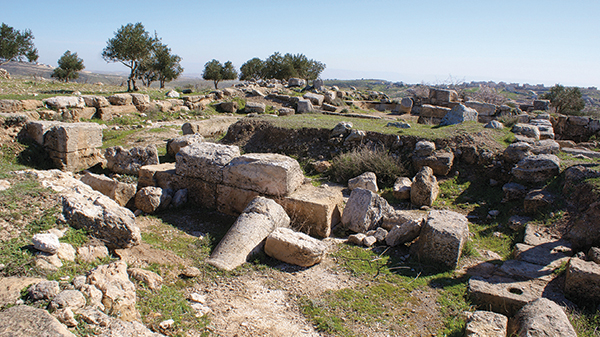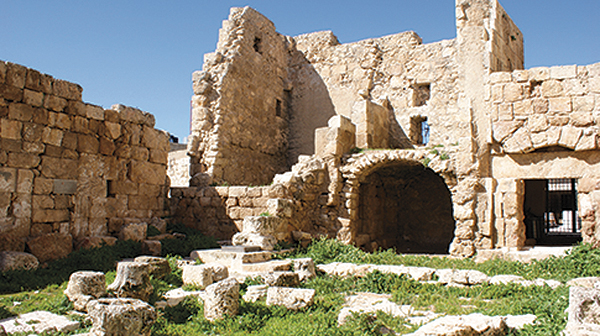Courtesy of VisitPalestine.ps
A huge contrast can be seen between the grand and busy city of Hebron and the smaller, tranquil agricultural villages that surround it. Both areas, however, hide interesting archaeological sites – a part of the historical wealth of Palestine. The little-known sites located in the villages are well worth visiting. The special season of spring, which is brimming with shades of green and wildflowers, can double the enjoyment of discovering the area.
The Aristobolia Byzantine basilica is located around eight kilometers south of Hebron, near the village of Zif. The building functioned well during the Islamic era (eighth century) but was destroyed by an earthquake in 749. The narthex, typical of Byzantine sacred architecture, three entrances from the west, and an apse facing east can still be seen. The floor of the monastery is covered in simple white-stone mosaic. The church stands on a hill that overlooks beautiful agricultural lands covered with olive and almond trees.
Farther south of Hebron can be found another place that is worth a visit – Al-Karmil. In the middle of the village is situated a Crusader pool, which is currently part of a public park. Up the hill, following the village’s abandoned Ottoman Era old core, one finds the ruins of two Byzantine churches and a Crusader fortress-like monastery. Unfortunately, the site is not well maintained, and its degradation is progressing quickly.
Among the most striking archaeological sites are the remains of a fourth-century synagogue found in Samu’a Village and maintained by the Palestinian Ministry of Tourism and Antiquities. Beautifully ornamented columns adorn its interior. There is also an Islamic niche, which, according to one tradition, was added during the time of Saladin. The site is surrounded by Ottoman Era buildings, among which is a very important example of a two-story village house with the lower floor designed for livestock (sheep or goats) and the upper floor reserved for people.
It is worth noting that none of these sites constitutes an official archaeological park. They are often found close to private properties, and therefore respect for the local communities during a visit is expected (e.g., modest clothing, respect for holy sites).
If you are looking for a companion to accompany you on a visit to these and other archaeological and cultural sites in the Hebron area, and if exploring new areas off the beaten track is something for you, then join the upcoming tour on April 3, organized jointly by VisitPalestine.ps and Association d’Echanges Culturels Hebron-France (AECHF). For more information, contact info@visitpalestine.ps.





